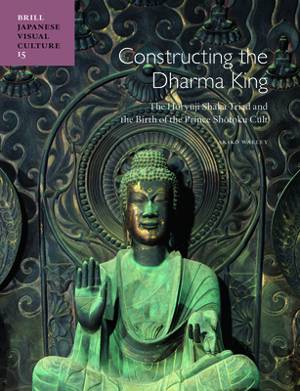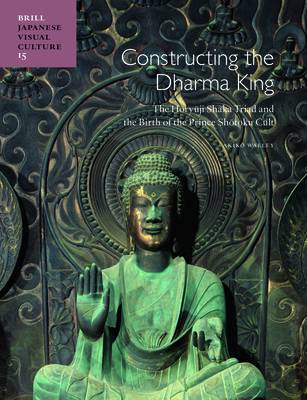
- Afhalen na 1 uur in een winkel met voorraad
- Gratis thuislevering in België vanaf € 30
- Ruim aanbod met 7 miljoen producten
- Afhalen na 1 uur in een winkel met voorraad
- Gratis thuislevering in België vanaf € 30
- Ruim aanbod met 7 miljoen producten
Zoeken
Constructing the Dharma King: The Hōryūji Shaka Triad and the Birth of the Prince Shōtoku Cult
Akiko Walley
€ 204,95
+ 409 punten
Omschrijving
Featuring the renowned seventh-century gilt-bronze Śākyamuni (Shaka) triad at the Hōryūji, Constructing the Dharma King reveals how the impression of a Buddhist image evolved in Yamato, Japan, from the indistinct sense of divine otherness at the early stage of the transmission to more concrete ideals and values concerning families, authority, and kingship.
According to the accompanying inscription, the Kashiwade, a low-ranking bureaucratic clan, commissioned the triad to commemorate the deaths of its family members. Considering the triad as an endpoint of a dynamic political re-envisioning spearheaded by Soga no Umako (d. 626) and the members of the Yamato sovereignty, Akiko Walley argues that the Kashiwade constructed the Shaka triad not simply as a private act of devotion, but a pivotal political act that demonstrated their allegiance and loyalty. This publication contends that the appearance of the Shaka triad was chosen to echo the new vision of a "Dharma King" that was manifested in Prince Umayato as the political persona orchestrated by Umako, and in the preceding Shaka triad statue at Asukadera produced by Umako and his closest allies. In the course of discussion, this book also reexamines the key points of debate surrounding this statue, including the reliability of the accompanying inscription, identity of its makers, and the statue's ties to the sculptural trends on the Asian continent.
According to the accompanying inscription, the Kashiwade, a low-ranking bureaucratic clan, commissioned the triad to commemorate the deaths of its family members. Considering the triad as an endpoint of a dynamic political re-envisioning spearheaded by Soga no Umako (d. 626) and the members of the Yamato sovereignty, Akiko Walley argues that the Kashiwade constructed the Shaka triad not simply as a private act of devotion, but a pivotal political act that demonstrated their allegiance and loyalty. This publication contends that the appearance of the Shaka triad was chosen to echo the new vision of a "Dharma King" that was manifested in Prince Umayato as the political persona orchestrated by Umako, and in the preceding Shaka triad statue at Asukadera produced by Umako and his closest allies. In the course of discussion, this book also reexamines the key points of debate surrounding this statue, including the reliability of the accompanying inscription, identity of its makers, and the statue's ties to the sculptural trends on the Asian continent.
Specificaties
Betrokkenen
- Auteur(s):
- Uitgeverij:
Inhoud
- Taal:
- Engels
- Reeks:
- Reeksnummer:
- nr. 15
Eigenschappen
- Productcode (EAN):
- 9789004292451
- Verschijningsdatum:
- 21/10/2015
- Uitvoering:
- Hardcover
- Formaat:
- Genaaid
- Afmetingen:
- 198 mm x 254 mm
- Gewicht:
- 1020 g

Alleen bij Standaard Boekhandel
+ 409 punten op je klantenkaart van Standaard Boekhandel
Beoordelingen
We publiceren alleen reviews die voldoen aan de voorwaarden voor reviews. Bekijk onze voorwaarden voor reviews.








